Legio XII Fulminata
Legio XII Fulminata: one of the Roman legions. Its name means "the lightning legion".
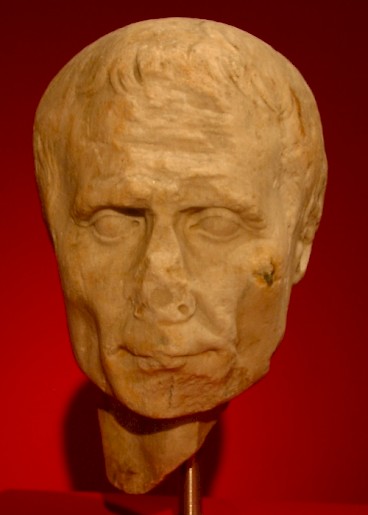
The eleventh and twelfth legions were recruited by the Roman general Julius Caesar for the campaign against the Helvetians in 58 BCE. He also mentions these units in his account of the battle against the Nervians, which took place in the late summer of 57. This unit must have been present at the other famous campaigns as well, such as the sieges of Bourges, the battle for Lutetia, and the siege of Alesia.
During Caesar's war against his fellow-triumvir and rival Pompey the Great, which broke out in January 49, the Twelfth participated in the invasion of Italy, and a year later, it was with Caesar during the battle of Pharsalus (9 August 48). After Caesar's victory, the men were pensioned off and received land in the neighborhood of Parma (45).
We know that it was called Victrix ("winner") after the civil war, which is a bit confusing because later, there was another legion called XII Victrix.
However, after Caesar had been murdered, the veterans were reenlisted by his adjutant Lepidus (44), who handed the legion over to Mark Antony. It may have fought on his side during his war against Caesar's relative Octavian, at Modena (43), and may have taken part in the war of Lepidus, Antony, and Octavian (the Second Triumvirate) against the assassins of Caesar, Brutus and Cassius. This war culminated in the latter's defeat in the battle of Philippi (42). It is certain that the twelfth legion returned to Italy, because at Perugia, sling stones have been found with the inscription XII Victrix.
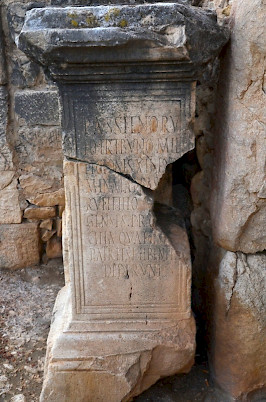
Later, the legion served Syria. From here, it participated in Mark Antony's ill-fated war against Armenia and the Parthian empire. According to his coins, Antony called the legion Antiqua, which means "old" in the sense of "of proven quality".
When Antony was defeated in the naval battle off Actium (31 BCE) by Octavian, some veterans were settled at Patras (in Greece), where they were accompanied by soldiers of X Fretensis. The legion itself was sent back to the east. XII Fulminata was used to occupy Egypt, probably at Babylon (Cairo), but it soon returned to Syria, where it is known to have garrisoned Raphanae in 14 CE.
Other legions in the eastern region were III Gallica, VI Ferrata, and X Fretensis. In 20 BCE, Augustus' stepson (and later successor) employed these units to impress the Parthians. They returned the eagle standards they had obtained at Carrhae in 53 BCE.
The governor of Syria, Publius Quinctilius Varus, used three of the Syrian legions to suppress the rebellions of the Jewish messianic claimants Judas, Simon, and Athronges after the death of king Herod in 4 BCE. It is likely that XII Fulminata was among them, but we are not certain.
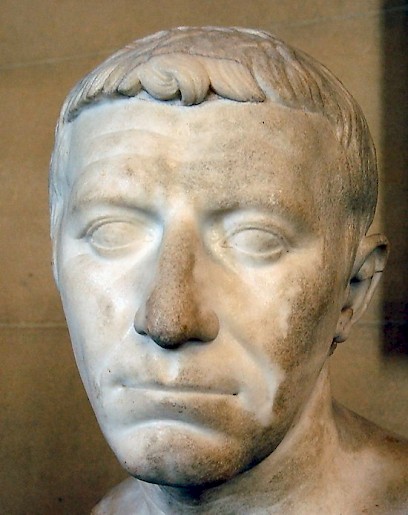
Using these Syrian legions, the Roman commander Gnaeus Domitius Corbulo launched a very successful campaign in the vassal kingdom Armenia. The capitals Artaxata (south of modern Yerevan) and Tigranocerta were captured (in 58 and 59) and he gave the Armenians a new, pro-Roman king, Tigranes VI (a great-grandson of the Jewish king Herod the Great). However, the Parthians placed another king on the Armenian throne, Tiridates, the brother of their king Vologases I.
A retaliatory campaign was organized by Lucius Caesennius Paetus, the governor of Cappadocia, in 62. He used XII Fulminata and IIII Scythica. However, the Parthians forced them into surrender at Rhandeia (winter 62/63). Later, Corbulo was able to turn the tables and ordered Tiridates to receive his crown for the second time from the Roman emperor Nero. However, the disgraced legions IIII Scythica and XII Fulminata were not permitted to participate in this war.
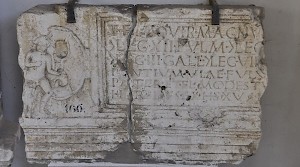
Worse was to come. In October 66, the governor of Judaea, Gessius Florus, needed military support to regain control of Jerusalem. The Twelfth (supported by subunits from IIII Scythica and VI Ferrata) came, saw, and returned, when its commander saw that his force was not strong enough. On his way back, he was defeated by one of the leaders of the Jewish Zealots, Eleazar son of Simon. Humiliation was added to the disgrace: the legion lost its eagle standard.
In the final phase of the war between the Jews and Romans, XII Fulminata regained its reputation for fighting bravely. When its general Vespasian proclaimed itself emperor, it sided with him. After the capture of Jerusalem in 70 (more), it was transferred to the newly annexed kingdom Melitene, which was part of the province Cappadocia. The legion now guarded the Euphrates border, together with XVI Flavia Firma. Its old base at Raphanaea was reused by III Gallica.
In 92, the emperor Domitian sent out the twelfth legion to support the allied kingdoms of Iberia and Albania (in the western and eastern Caucasus). An inscription found near the shores of the Caspian Sea mentions the presence of a centurio of XII Fulminata named Lucius Julius Maximus. No Roman legion has ever penetrated this far to the east.
The Twelfth probably participated in the Armenian campaign of the emperor Trajan (114), which culminated in the annexation of this kingdom. However, during the next two years, Trajan tried to seize Mesopotamia and Babylonia, which was impossible to keep. His successor Hadrian gave up all territories east of the Euphrates (117/118).
In 134, the Alans, a tribe from the steppes of Kazakhstan, threatened the Roman empire. The governor of Cappadocia, Arrian of Nicomedia, took XV Apollinaris and XII Fulminata into the field and defeated the invaders before they could become dangerous; he described this campaign in his Ektaxis.
In 162-166, it probably took part in the campaign of Lucius Verus against the Parthians. During this war, the Armenian capital Artaxata (Yerevan) was again occupied by a mixed subunit of XII Fulminata and XV Apollinaris that was to stay there for some time.
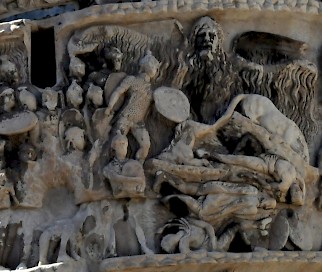
There is a strange story that the twelfth legion - or probably, a subunit - participated in the emperor Marcus Aurelius' war against Quadi. During a hot summer (in 172 or 174), the legion had become surrounded by enemies on a place where no water was to be found. Christian authors later believed that the prayer of Christian soldiers had caused the saving rains; others thought that an Egyptian magician named Harnuphis had done the job. (Go here for the complete story, as told by Cassius Dio.)
In 175, we find the Twelft again in Melitene. In that year, general Avidius Cassius revolted against Marcus Aurelius. XII Fulminata refused to cooperate and remained loyal to the lawful ruler. When he had settled the affair, the legion was awarded the title Certa Constans, "reliably constant".
After the murder of the emperor Publius Helvius Pertinax in 193, civil war broke out. XII Fulminata sided with Pescennius Niger, the governor who Syria who proclaimed himself emperor. This was a fatal mistake: in 194, Niger was defeated by Lucius Septimius Severus at Cyzicus, the Cilician gate and Issus.
During the reign of Lucius Septimius Severus, the eastern border was moved from the Euphrates to the Tigris. Like XVI Flavia Firma, XII Fulminata, which had been a frontier guard for more than a century, became now the strategic reserve behind the frontier line. This was not a very honorable position, and may have been a punishment for its behavior during the civil war.
The Twelfth must have taken part in the expeditions of third century, like the one led by Severus' son Caracalla (217) and the war waged by Severus Alexander against the new, Sasanian, Persian empire. The Sasanians had invaded the Roman empire in 230 and had installed an emperor in Emessa, but Severus Alexander was able to restore order and invade Mesopotamia. In 244, the Romans again invaded Iraq, but their emperor Gordian III died and was succeeded by Philippus Arabs, who owed his throne to the Sasanians king Shapur I.
Melitene was one of the regions where Christianity became popular at an early stage. Therefore, the name of the legion can be found in martyrologies, such as that of Polyeuctes, who was martyred in 259 during the persecution by the emperor Valerian. Another story concerns the "forty martyrs", who refused to renounce their faith when the governor of the province Lesser Armenia demanded this. They were frozen to death in a lake. The youngest, a mere boy called Melito, was the last to die.
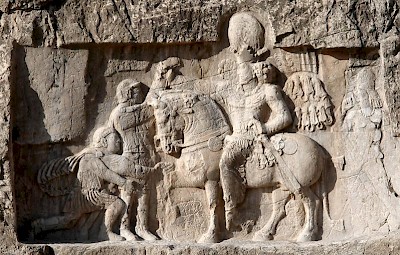
In those years, the Roman position in the east was precarious. In 256, the Persian leader Shapur captured Satala (the fortress of XV Apollinaris), and two years later he sacked Trapezus. When the Roman emperor Valerian tried to restore order and invaded Mesopotamia, he was defeated and captured. Captive Roman soldiers were ordered to build a bridge at modern Shushtar. The Roman defeats of Gordian and Valerian, and the installation of Philip, are commemorated on several Sasanian monuments.
However, under the emperor Odaenathus of Palmyra (261-267), who organized an empire of his own, the Romans restored their fortunes. It is a bit strange that the Roman emperor Gallienus (260-268) gave XII Fulminata a new surname, Galliena. This cannot really be explained because during the reign of Gallienus, the Twelfth belonged to the Odaenathus' Palmyrene empire. After his death, his wife, queen Zenobia, continued to rule.
The Palmyrene empire was subdued by the emperor Aurelian (in 274). Under Diocletian (284-305), the Romans again invaded Mesopotamia and in 298, a peace treaty was concluded in which the Persians had to give up territories in northern Mesopotamia. The twelfth legion must have played a role in all these campaigns, but we have almost no information about them. The unit was still guarding the Euphrates crossing near Melitene at the beginning of the fifth century.
Since this legion was constituted by Caesar, the emblem of this legion may have been a bull, but this symbol is nowhere found. Instead, the soldiers had badges showing a thunderbolt.
Literature
- G. Bertrandy & B.Rémy, "Legio XII Fulminata", in: Yann Le Bohec, Les légions de Rome sous le Haut-Empire (2000 Lyon) 253-257
- A.S. Hall, "The XII Fulminata: Countermarks, Emblems, and Movements under Trajan or Hadrian", in: S. Mitchell (ed.), Armies and Frontiers in Roman and Byzantine Anatolia (1983) 41-46
- article by Emil Ritterling.